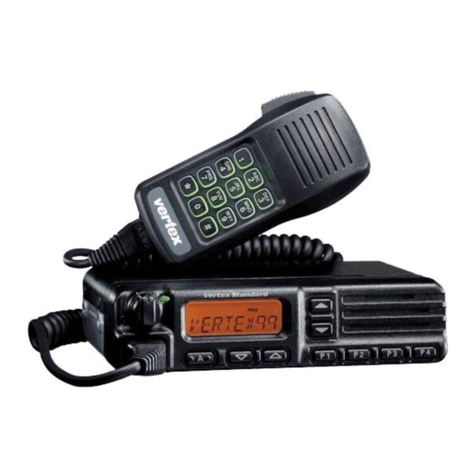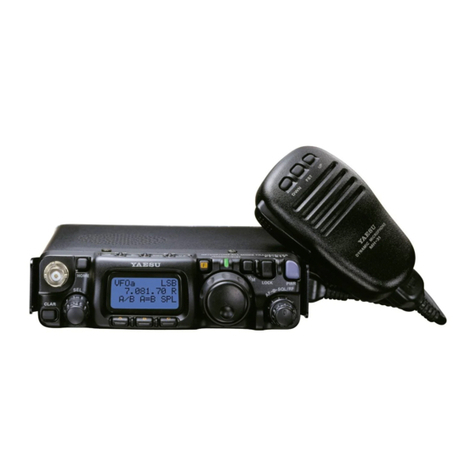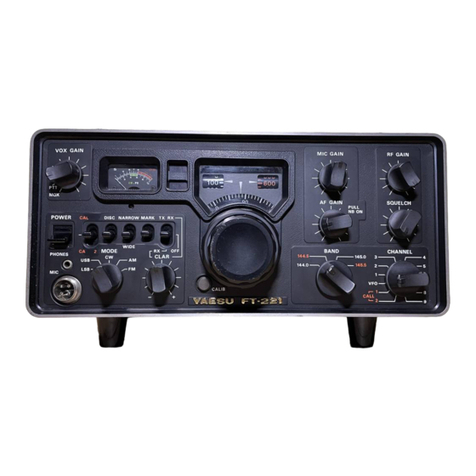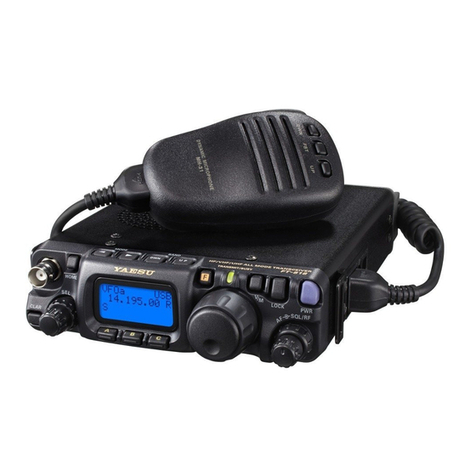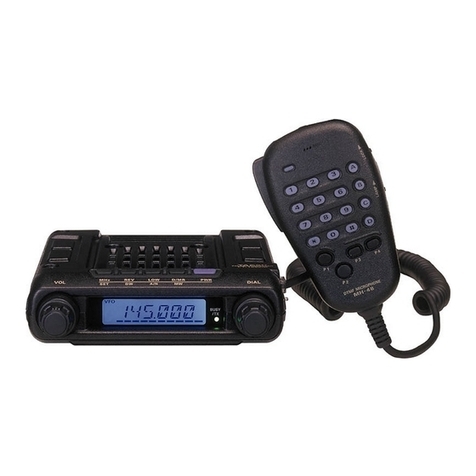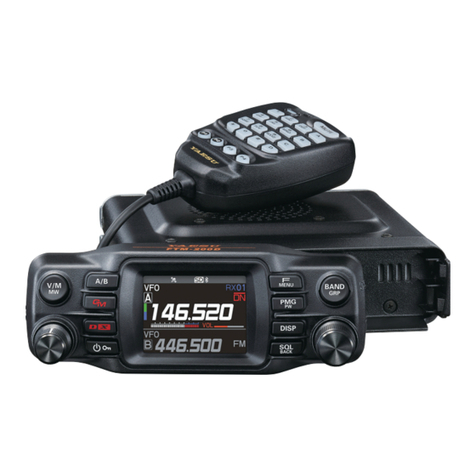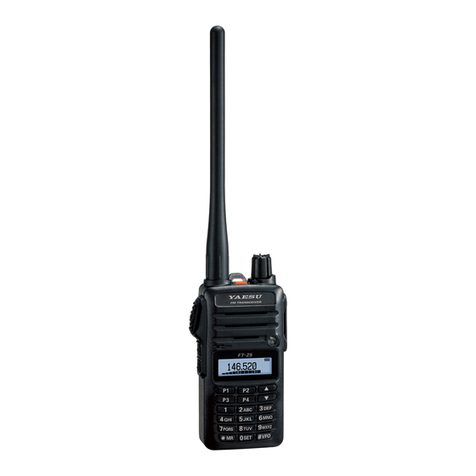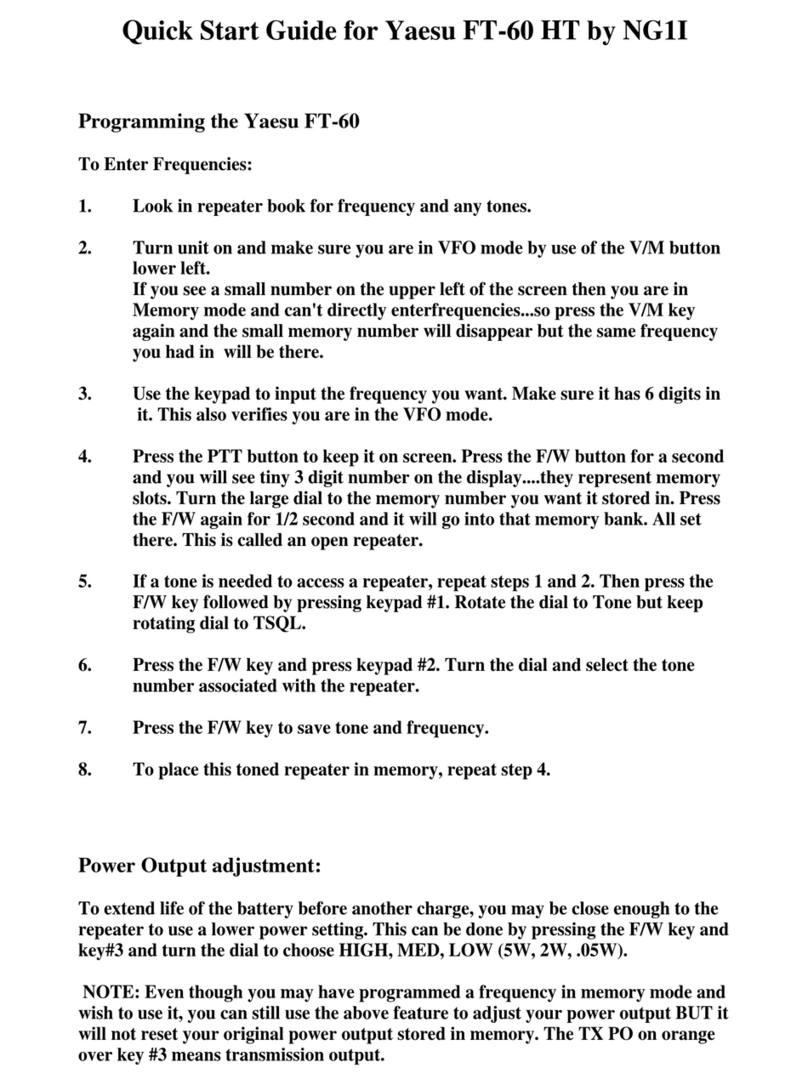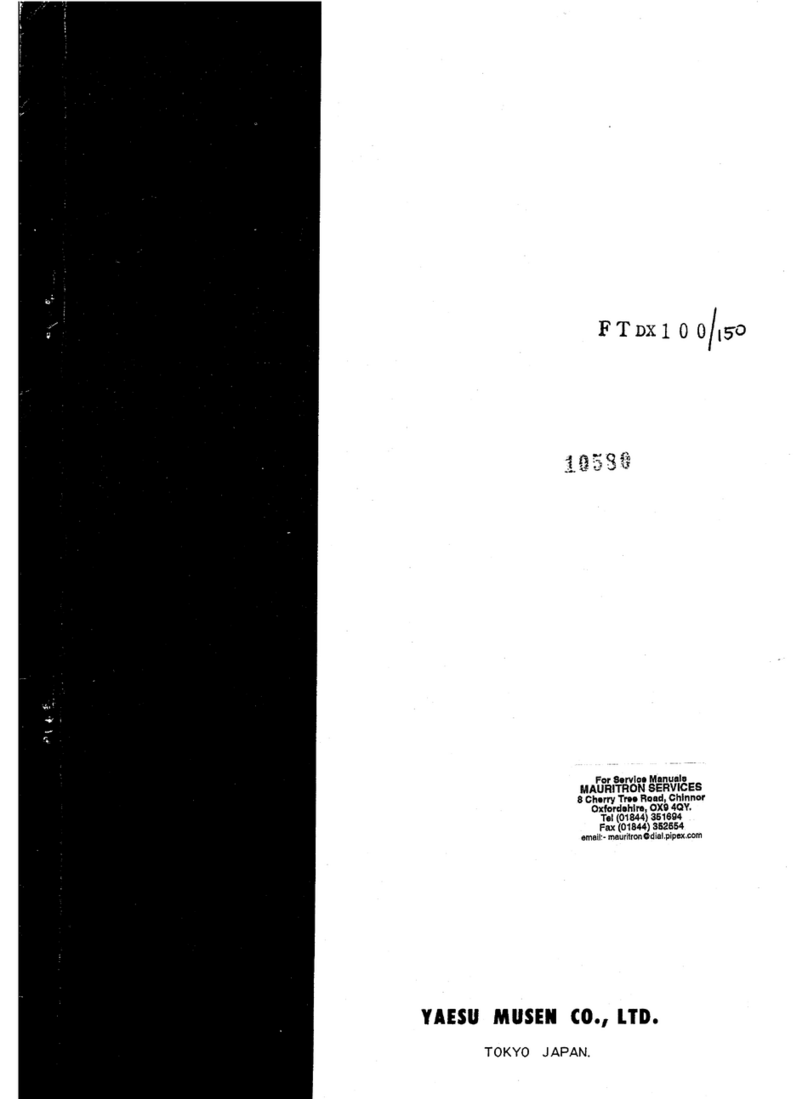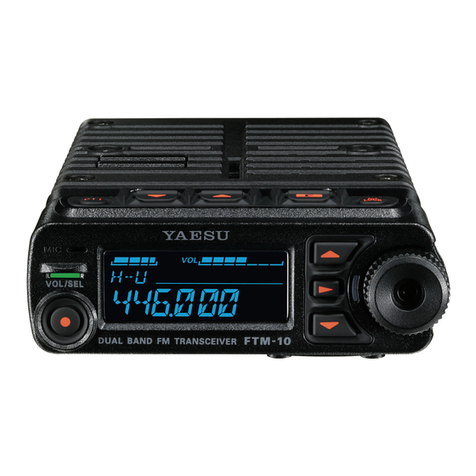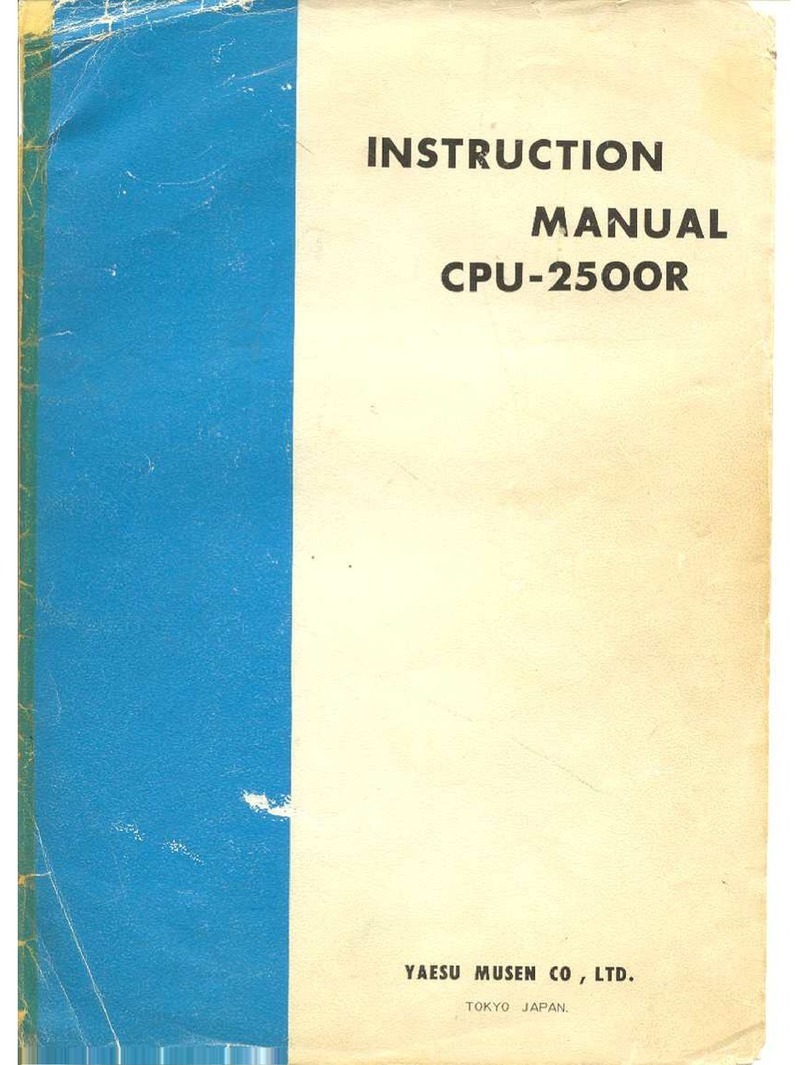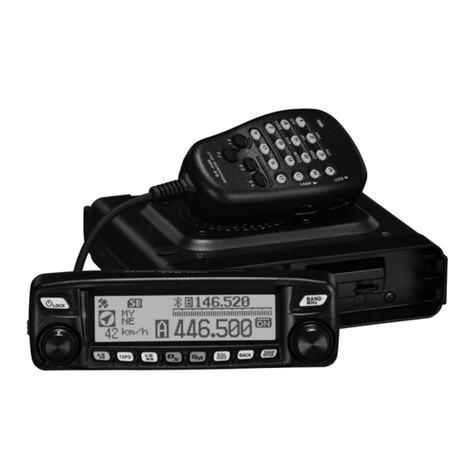Page 2 FT DX 9000 CONTEST OPERATION MANUAL
TABLE OF CONTENTS
General Description ........................................... 1
About This Manual. . . ........................................................................ 1
Conventions Used in This Manual ...................................................... 1
Before You Begin. . . ........................................... 4
1. Connecting AC Power ..................................................................... 4
2. Configuring Your FT DX 9000 Using the Menu ............................ 4
3. Connecting and Selecting the Microphone ..................................... 5
4. Extending the Front Feet ................................................................. 5
5. Adjusting the Main Dial Torque ..................................................... 6
6. Restarting Power after a Voltage Fluctuation.................................. 6
7. Resetting the Microprocessor .......................................................... 7
Resetting Memories (Only) .......................................................... 7
Menu Resetting ............................................................................ 7
Full Reset ...................................................................................... 7
Features .............................................................. 8
Accessories ...................................................... 10
Options .............................................................. 11
Installation and Interconnections .................... 12
Antenna Considerations .................................................................... 12
About Coaxial Cable ......................................................................... 12
Grounding .......................................................................................... 13
Connection of Antenna and Power Cables ........................................ 14
Connection of Microphone, Headphones and
FH-2 Remote Control Keypad ............ 15
Key, Keyer, and Computer-Driven Keying Interconnections ........... 16
VL-1000 Linear Amplifier Interconnections .................................... 17
Interfacing to Other Linear Amplifiers .............................................. 18
Plug/Connector Pinout Diagrams ................... 19
Front Panel Controls ........................................ 20
Rear Panel ......................................................... 34
Frequency Display ............................................ 36
FH-2 Operation ................................................. 37
Basic Operation:
Receiving on Amateur Bands ......... 38
Operation ........................................................................................... 39
Operation on 60-Meter (5 MHz) Band (U.S. Version only) ............. 41
CLAR (Clarifier) Operation on Main (VFO-A) ................................ 42
LOCK ................................................................................................ 43
DIM ................................................................................................... 43
B-DISP OFF ...................................................................................... 43
Convenient Features ........................................ 44
P.BACK (Audio Playback) from VFO-A Receiver ........................... 44
"MY Bands" Operation ..................................................................... 45
Band Stack Operation ....................................................................... 46
C.S (Custom Switch) ......................................................................... 46
Rotator Control Functions ................................................................. 47
More Frequency Navigation Techniques .......................................... 48
ANTENNA SELECTION .................................................................. 49
Receiver Operation (Front End Block Diagram) .............................. 50
IPO (Intercept Point Optimization) ................................................... 51
ATT .................................................................................................... 52
RF Gain (SSB/CW/AM Modes) ....................................................... 53
Advanced Interference
-Suppression Features .................. 54
Using the VRF (Variable RF Front-end Filter) ................................. 54
Interference Rejection ...................................... 55
ROOFING (Roofing Filters) ............................................................. 55
Contour Control Operation ............................................................... 56
IF SHIFT Operation (SSB/CW/RTTY/PKT Modes) ......................... 57
WIDTH (IF DSP Bandwidth) Tuning
(SSB/CW/RTTY/PKT Modes) ........................ 58
Using IF Shift and Width Together ............................................ 58
IF Notch Filter Operation (SSB/CW/RTTY/PKT/AM Modes) ........ 59
Digital Noise Reduction (DNR) Operation ....................................... 60
NARROW (NAR) One-Touch IF Filter Selection ............................ 61
Digital Notch Filter (D.NOTCH) Operation ..................................... 62
IF Noise Blanker (NB) Operation ..................................................... 62
Tools for Comfortable and
Effective Reception ................... 63
AGC (Automatic Gain Control) ........................................................ 63
SLOPED AGC Operation ........................................................... 64
Audio Limiter (AFL) Feature ............................................................ 65
SSB/AM Mode Transmission ........................... 66
Phantom Voltage for Condenser Microphones ................................. 67
Using the Automatic Antenna Tuner ............... 68
ATU Operation .................................................................................. 68
About ATU Operation ....................................................................... 69
Lithium Battery Replacement ........................................................... 70
SSB/AM Mode Transmission ........................... 72
Using the Speech Processor - SSB, AM Mode - ............................ 72
Adjusting the SSB Transmitted Bandwidth ...................................... 73
Signal Quality Enhancement Using the
Parametric Microphone Equalizer ................................... 74
Low- Distortion CLASS-A Operation ............................................... 76
Voice Memory ................................................................................... 78
Convenient Transmitter Accessories .............. 80
VOX: Automatic TX/RX Switching using Voice Control
SSB/AM/FM Modes ............. 80
Using the MONITOR ........................................................................ 80
Split Operation Using the TX Clarifier (VFO-A Operation) ........... 81
Clarifier Offset Bar Indicator ..................................................... 81
Split-Frequency Operation ................................................................ 82
Quick Split Operation ................................................................ 83
CW Mode Operation ......................................... 84
Setup for Straight Key (and Straight Key emulation) Operation ...... 84
Using the Built-in Electronic Keyer .................................................. 85
Full Break-in (QSK) Operation ......................................................... 85
Setting the Keyer Weight (Dot/Space:Dash ) Ratio .......................... 86
Selecting the Keyer Operating Mode ................................................ 86
CW Convenience Features .............................. 87
CW Spotting (Zero-Beating) ............................................................. 87
Using CW Reverse ............................................................................ 88
CW Delay Time Setting .................................................................... 89
CW Pitch Adjustment ........................................................................ 89
Contest Memory Keyer ..................................................................... 90
Message Memory ....................................................................... 90
TEXT Memory ........................................................................... 92

